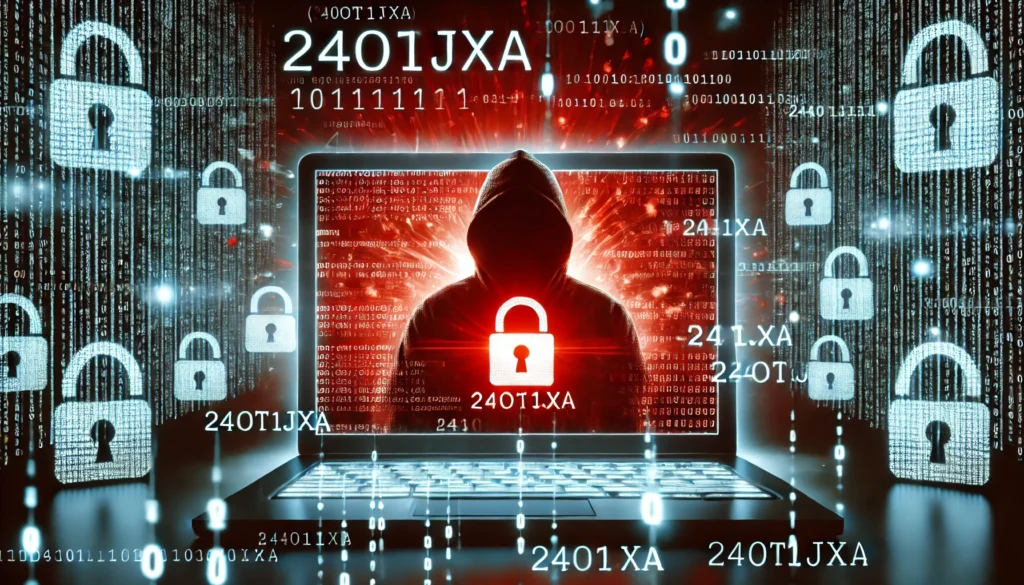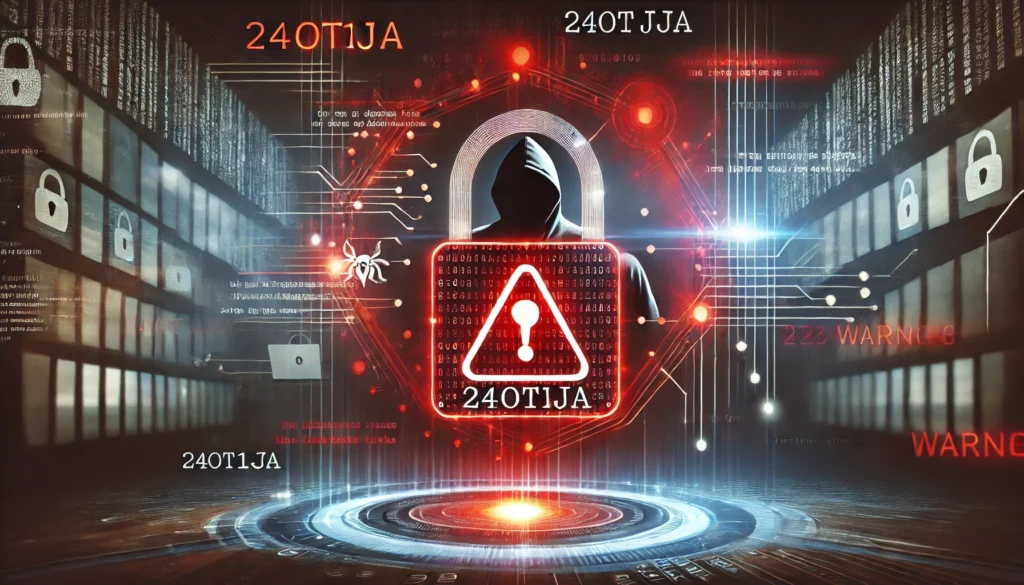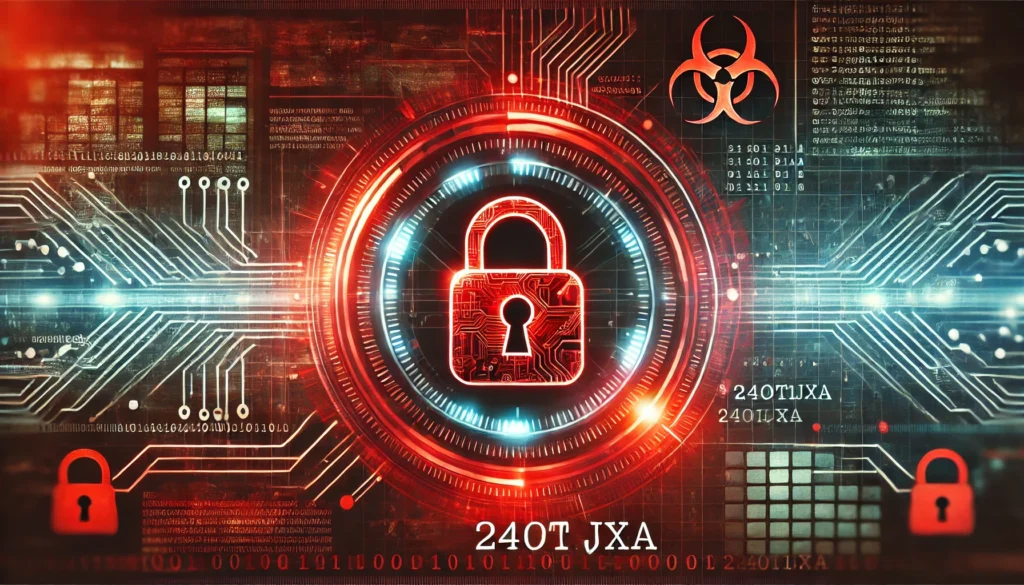Introduction to 24ot1jxa
In an era where our lives are increasingly intertwined with digital technology, understanding and mitigating cybersecurity threats is paramount. Among these threats, “24ot1jxa” has emerged as a significant concern due to its potential to cause extensive harm.
This article aims to shed light on the nature of 24ot1jxa, the risks it poses, and the steps you can take to safeguard your digital environment.
What is 24ot1jxa?
At its core, 24ot1jxa is a form of malicious software, commonly referred to as malware. It is designed to infiltrate devices, compromise data integrity, and disrupt normal operations. This malware often masquerades as legitimate software or hides within seemingly harmless downloads, making it challenging to detect and prevent.
Why is 24ot1jxa Harmful?

The dangers associated with 24ot1jxa are multifaceted, affecting both individual users and larger organizational structures. Understanding these risks is crucial for effective prevention and response.
Data Theft and Privacy Violations
One of the primary threats posed by 24ot1jxa is data theft. Once installed, it can silently collect sensitive information such as login credentials, banking details, and personal identification information. This data can then be used for identity theft, financial fraud, or sold on the dark web, leading to severe privacy violations and financial losses.
System Instability and Performance Issues
Beyond data theft, 24ot1jxa can significantly impair system performance. Users may experience slower processing speeds, increased CPU usage, and frequent system crashes. These issues not only disrupt daily activities but can also lead to costly repairs or replacements of affected hardware.
Compromise of Online Accounts
By harvesting login credentials, 24ot1jxa enables cybercriminals to gain unauthorized access to various online accounts. This can result in unauthorized transactions, dissemination of spam or malicious content to contacts, and further identity theft, amplifying the initial damage.
Network Breaches and Further Spread
In networked environments, 24ot1jxa can propagate rapidly, infecting multiple devices and leading to widespread network disruptions. For businesses, this can mean halted operations, loss of sensitive corporate data, and a tarnished reputation.
Ransomware and Extortion
In some instances, 24ot1jxa serves as a precursor to ransomware attacks. After infiltrating a system, it can encrypt critical files, rendering them inaccessible until a ransom is paid. This extortion tactic has become increasingly prevalent, with devastating effects on both individuals and organizations.
How Does 24ot1jxa Spread?

Understanding the transmission vectors of 24ot1jxa is essential for effective prevention. Common methods include:
Phishing Emails
Cybercriminals often use phishing emails to distribute 24ot1jxa. These emails appear to be from legitimate sources and entice recipients to click on malicious links or download infected attachments, leading to immediate infection upon interaction.
Fake Software Downloads
Another common method is through fake or compromised software downloads. Users seeking free versions of paid software or downloading from untrusted sources may inadvertently install 24ot1jxa, believing it to be legitimate software.
Exploiting Software Vulnerabilities
24ot1jxa can also spread by exploiting vulnerabilities in outdated software or operating systems. Without regular updates and patches, systems become susceptible to such exploits, allowing malware to infiltrate without user intervention.
How to Protect Yourself from 24ot1jxa

Protection against 24ot1jxa requires a proactive and multifaceted approach:
Keep Software and Operating Systems Updated
Regular updates and patches address known vulnerabilities that malware like 24ot1jxa exploit. Enabling automatic updates ensures that your systems are always protected against the latest threats.
Use Reliable Security Software
Installing reputable antivirus and anti-malware programs provides an additional layer of defense. These tools can detect and neutralize threats before they cause harm, offering real-time protection and peace of mind.
Be Cautious with Email Attachments and Links
Exercise caution when dealing with unsolicited emails, especially those containing attachments or links. Verify the sender’s authenticity and avoid interacting with suspicious content to prevent accidental malware installation.
Download Software Only from Trusted Sources
Ensure that all software is downloaded from official or reputable sources. Avoid pirated software or downloads from unverified websites, as these are common vectors for malware distribution.
Regular Backups
Maintaining regular backups of important data ensures that you can recover information in the event of a malware attack. Store backups securely, either offline or in the cloud, to prevent them from being compromised.
Conclusion
The threat posed by 24ot1jxa underscores the importance of vigilance in our digital interactions. By understanding its nature, recognizing the risks, and implementing robust security measures, we can protect ourselves and our organizations from this and similar cyber threats.
FAQs
1. What should I do if I suspect my device is infected with 24ot1jxa?
If you suspect an infection, immediately disconnect from the internet to prevent further data transmission. Run a full system scan using a reputable antivirus program and remove any detected threats. If the issue persists, consider consulting a cybersecurity professional.
2. Can 24ot1jxa affect mobile devices?
Yes, mobile devices are also vulnerable to malware like 24ot1jxa. It can infiltrate smartphones through malicious apps, phishing messages, or compromised websites. Keeping your mobile OS updated and using security software can help prevent infections.
3. How can I tell if an email contains malware?
Be cautious of emails that contain unexpected attachments, urgent messages requesting personal information, or links that direct you to unfamiliar websites. It is always a good idea to verify the sender and stay away from suspicious links.
4. Is paying a ransom the only way to recover encrypted files?
No, paying the ransom is not recommended as it encourages cybercriminals and does not guarantee file recovery. Instead, try restoring your files from backups or seek help from cybersecurity professionals.
5. What is the best way to prevent malware infections?
The best prevention methods include keeping your software updated, avoiding suspicious downloads, using strong security software, and regularly backing up important data. Practicing good cybersecurity habits can significantly reduce the risk of infection.
You May Like: Ultimate Innovation for Productivity, Security & Efficiency

